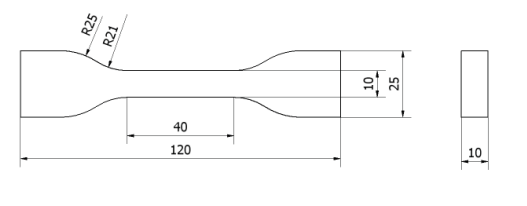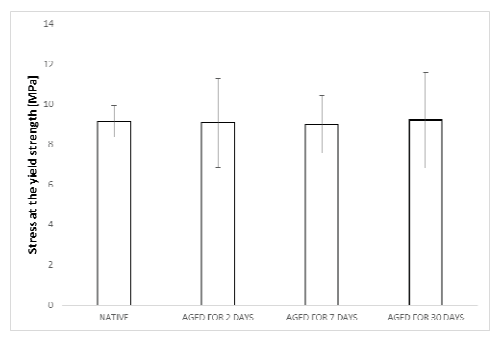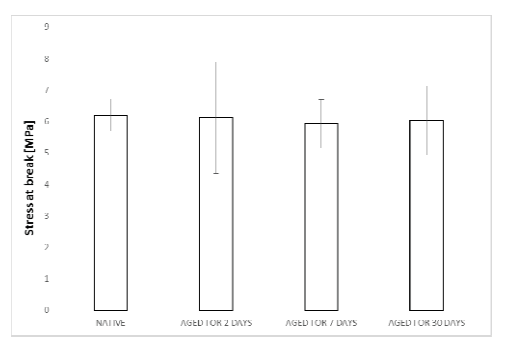Researchers in Poland are studying materials for more unique applications, sharing their results in the recently published ‘Thermoplastic polyurethanes for mining application processing by 3D printing.’
Mining is undeniably hard work, and materials related to this industry must be extremely tough as they are continually vulnerable to harsh elements, as well as abrasive contact and strong chemicals.
TPU is commonly used due to benefits such as:
- High tensile and breaking strength
- Excellent and varying levels of hardness
- High maximal strain
- Excellent elasticity
- Fatigue resistance
- Low deformation, low absorptivity
TPU can be used to make different high-performance parts like hoses, cables, screens, conveyor belts, and more. Previous studies for making products used in mining have centered around injection molding for manufacturing, leading the researchers to point out the obvious limitations of using models that only have a mold:
“The 3D printing technology developing rapidly throughout the recent years allows for high-precision, personalized elements’ printing, made of thermoplastic materials,” stated the researchers. “In design’s terms, however, it is significant to develop and print stuff exhibiting mechanical properties comparable to the mechanical properties of stuff produced by injection molds’ means.
“The use of 3D printing to produce elements help a miner in his work can be possible only when the products produced will be resistant to the conditions prevailing in a mine.”
The researchers are focused on the concept of making a wide range of personalized items for the miners, but testing was required to make sure they would be resistant to the challenging conditions as well as strong enough to hold up to exposure to mine water.
The researchers used Elastollan 1185A to create their samples, drying the material in a convection oven and then extruding it in a customized single-screw extruder.
The researchers left the samples in an aging chamber, immersed in synthetic mine water.
“The aging process was carried out for two, seven, and thirty days at a temperature of 70°C. The sample population for each aging time was five,” explained the researchers.
The aged samples were then stretched on a universal testing machine, along with the native samples, with five measurements made for each.
Overall, testing showed that the synthetic mine water did not affect the samples—evaluating hardness, mechanical properties, and ultimately, examining degradation of the polyurethane structure (using an infrared spectrometer). The researchers noted that there were no ‘new peaks’ in any of the samples that would have caused ‘the emergence of new chemical groups or bonds.’
“To sum up, it can be concluded that polyurethane samples obtained by 3D printing are resistant to the action of synthetic mine water and as such can be widely used in many branches of mining,” stated the researchers upon concluding their study.
TPU has been tested in a variety of different research studies over the years as scientists, manufacturers, and users create new filaments and products as well as working through issues with adhesion, improving post-processing surfaces, and more.
What do you think of this news? Let us know your thoughts! Join the discussion of this and other 3D printing topics at 3DPrintBoard.com.
[Source / Images: ‘Thermoplastic polyurethanes for mining application processing by 3D printing’]Subscribe to Our Email Newsletter
Stay up-to-date on all the latest news from the 3D printing industry and receive information and offers from third party vendors.
Print Services
Upload your 3D Models and get them printed quickly and efficiently.
You May Also Like
The Market and Industry Potential of Multi-Material 3D and 4D Printing in Additive Electronics
Additive manufacturing leverages computer-based software to create components for products by depositing either dielectric or conductive materials, layer by layer, into different geometric shapes. Since its birth in the 1980s,...
3DPOD 262: Bio-inspired Design for AM with Dhruv Bhate, Arizona State University
Dhruv Bhate is an associate professor at Arizona State University. There, he looks at structures, materials, and design. Previously, he worked at PADT as well as in the semiconductor and...
3DPOD 261: Tooling and Cooling for AM with Jason Murphy, NXC MFG
Jason Murphy´s NXC MFG (Next Chapter Manufacturing) is not a generalist service; instead, the company specializes in making tooling. Using LPBF and binder jet, the company produces some of the...
3DPOD 260: John Hart on VulcanForms, MIT, Desktop Metal and More
John Hart is a Professor at MIT; he´s also the director of the Laboratory for Manufacturing and Productivity as well as the director of the Center for Advanced Production Technologies....






































